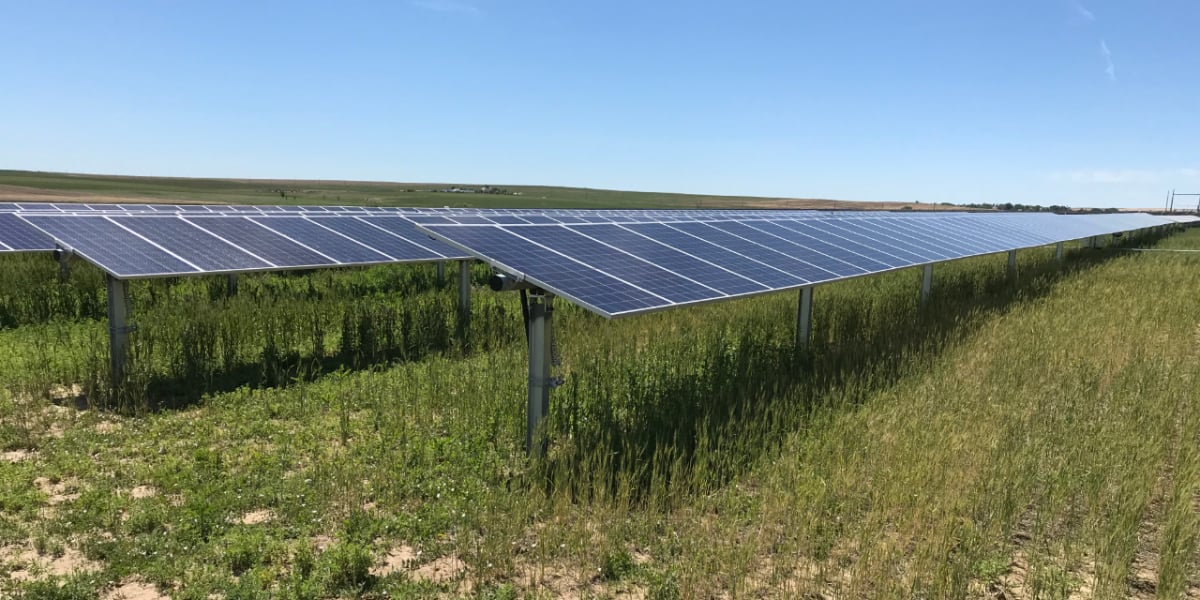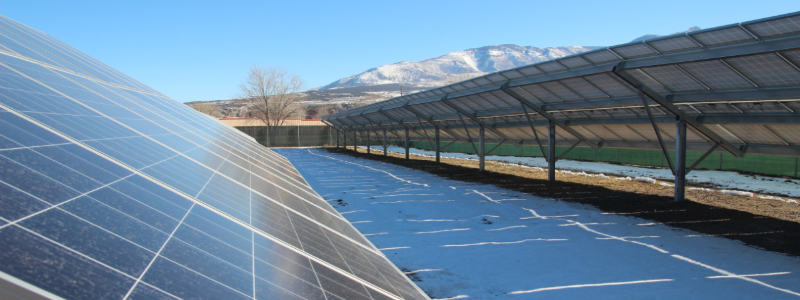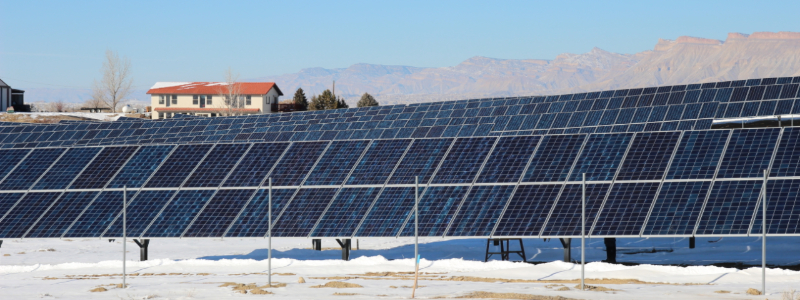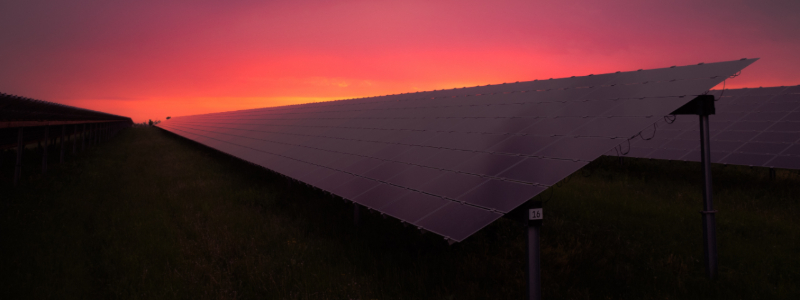Solar Farm Land Lease: Generate Consistent Income
November 18, 2019

As solar farms become more prevalent in many states, more and more landowners are interested in hearing about the benefits of leasing their land for these projects. Solar farms can be large or small, making them a good use for landowners with flat land near power lines. Often, solar farms are sited in rural locations where agricultural uses are the most common activity. Less commonly, solar farms are located closer to urban areas and can be compatible with commercial, industrial, and large-lot residential zones. Read more about solar farm land lease and how community solar helps generate consistent income for landowners.

Land Use & Solar Projects
Because solar farms are passive land use, they share much in common with traditional agriculture. The solar projects do not generate emissions, have very limited (if any) exterior lighting, require only infrequent site visits from company personnel and are low to the ground. In short, solar farms are good neighbors and create far less impact on their surroundings than almost any other use. Solar farm lease rates are most competitive with traditional agricultural methods.
In more urban areas, solar farms must find land that is otherwise not “prime” for development. This land can have limited/challenging access or be located next to a more unpleasant use such as a wastewater treatment plant, manufacturing facility, or any other facility that generates significant noise, produces unpleasant odors, or creates other nuisances.
Solar Farm Land Lease Benefits
The income generated by leasing land for solar is consistent and typically not dependent on the weather. For a rural landowner accustomed to the cyclical nature of agricultural revenues, this can be a refreshing change of pace allowing them to plan on a known income stream for years to come. For an urban landowner, there is relief in knowing a tenant will not try to break a lease early due to difficult site conditions or be impacted if adjacent land uses shift over time.
Solar farm income is not consistent from state to state, or even from county to county. The amount of money a solar developer can pay a landowner is a function of several costs including:
- The amount required by the utility to build the project broadly called “interconnection cost”
- The amount the customer, or customers, are paying the company to build the project and generate the energy, broadly called the “power purchase agreement”
- The specific site conditions
- Is the soil capable of supporting the solar array?
- Does the company need to grade the land to create a useable surface? Etc.?
Each of these factors weighs heavily into the finances of the entire project and impacts the amount a company can pay a landowner.

Landowners Consistent Income
Each landowner will have different motivations for leasing their land for a solar farm, but it’s generally agreed that all motives will have a financial component.
Some landowners may not be generating very much income from their land for a variety of reasons. The site may be in a dry climate, and the landowner may not have access to water (often referred to as “water rights”). In this situation, the ability of the land to produce financial returns is heavily dependent on the weather. Several dry years could seriously reduce, or eliminate, the landowner’s ability to generate any income from their land. In this case, the income from a solar farm brings two-fold relief: firstly, the landowner receives consistent income every year, and secondly, the landowner gets relief from the labor of managing the agricultural activities that would otherwise be required. Other landowners may have other limitations with their land, such as rocky, unproductive soil, or physical constraints that limit their ability to use large implements to efficiently farm a section of their land.
Other landowners may be interested in developing their land several years into the future. For these landowners, income opportunities in the short term must be weighed against the future potential for selling their land. In many cases, if development isn’t expected in the short term, a landowner can lease their land for a solar farm maximizing their short-term income while holding their land for a future sale. This situation allows the landowner to “land bank” their property and generate income without having to worry about leasing their land until they’re ready to sell.
Revenue Opportunities
In many circumstances, landowners who have owned their land for generations are interested in finding ways to keep their land in their families. However, it’s become common that younger generations no longer live near the family’s land, creating a difficult decision for older generations of landowners: sell the family land or find a way to hold onto it for the future. Putting the land into a trust or LLC and leasing for a solar farm eliminates the burden of annual agricultural or grazing contracts/leases, protecting the land and creating an ongoing revenue stream that can benefit younger generations by creating a fund of money that can be used for college, down payments for homes, or other uses that may be important to the family.

Regardless of the specific situation, solar farm land lease has many additional financial benefits beyond the annual lease payment alone. It’s typical for the company leasing the land to pay for the property taxes inside the lease area. This reduces the annual property tax burden for the landowner. The company also manages the vegetation inside the solar array, virtually eliminating the landowner’s costs for maintenance and care of the leased property. Because the company leases the land for many years, there is no annual renegotiation of the contract required.
Solar Farm Land Lease Rates
Solar farm land lease rates vary with the amount of land leased for the project. Larger acreages typically come with a lower $/acre lease rate. For a large solar farm (50 – 300+ acres) in a rural location, lease rates could begin around $250/acre/year. As the solar farm footprint gets smaller and closer to urban centers, the lease rate could exceed $1,000/ac/yr. No two sites will have the same characteristics, and each scenario must be evaluated by a qualified professional to determine an appropriate and competitive lease rate.
If you believe your land may be suitable for a solar farm, please reach out to Pivot Energy at land@pivotenergy.net so that we can discuss your land and your goals. A solar farm may be the solution for you and your family to ensure you’re maximizing your land’s potential for generations to come!





